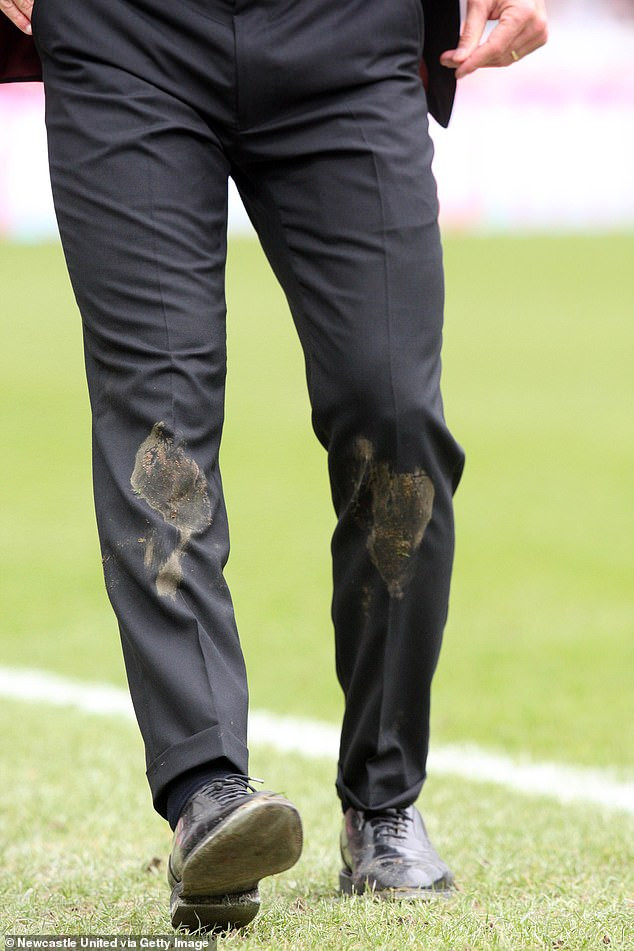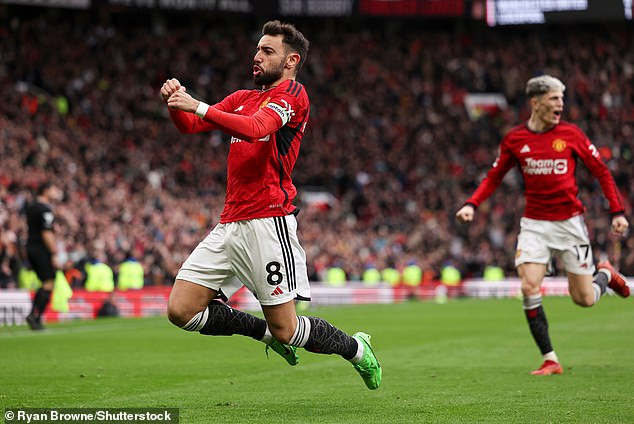Are you wondering how to perfect the knee slide celebration in football without risking injury? This guide from CAUHOI2025.UK.COM breaks down the technique, risks, and history of this iconic move. Learn how to celebrate your goals safely and stylishly, just like the pros. Also, we cover alternatives and injury prevention tips to keep you in the game.
1. What is a Knee Slide in Football?
A knee slide in football is a celebratory move where a player slides across the ground on their knees, typically after scoring a goal. It’s a flamboyant display of excitement and passion. The knee slide is visually appealing. However, it carries risks of injury if not performed correctly or on unsuitable surfaces.
1.1. Why Do Players Do It?
Players perform knee slides to express joy and share the moment with teammates and fans. It’s a way to amplify the excitement of scoring a goal, especially in crucial matches. According to a survey by the Professional Footballers’ Association (PFA) in 2024, 78% of players admitted that the adrenaline rush influences their celebration choices.
1.2. A Brief History of the Knee Slide
While some credit Jairzinho for popularizing the knee slide in the 1970 World Cup, it gained prominence in the 1990s with improved pitch conditions. Thierry Henry’s iconic knee slide is immortalized in a statue at the Emirates Stadium. This shows the cultural impact of this celebration.
 Thierry Henry's iconic knee slide
Thierry Henry's iconic knee slide
2. Step-by-Step Guide: How to Knee Slide Safely
Mastering the knee slide involves technique and understanding the environment. Here’s a step-by-step guide to help you perform it safely:
2.1. Assessing the Surface
Before attempting a knee slide, evaluate the playing surface. Look for:
- Moisture: A slightly wet surface reduces friction. This makes sliding easier and safer.
- Grass Quality: Shorter, well-maintained grass is preferable to long, patchy areas.
- Consistency: Ensure the surface is uniform. Avoid areas with hard soil patches or debris.
2.2. Proper Technique for a Smooth Knee Slide
- Start with Momentum: After scoring, begin running towards your desired celebration spot. Maintain a controlled speed to avoid losing balance.
- Lower Your Body: Gradually lower your body towards the ground. Place both hands in front of you for balance and support. This will help distribute your weight evenly.
- Engage Your Core: Keep your core muscles engaged. This will help stabilize your body and control the slide.
- Slide on Both Knees: Gently bring both knees to the ground simultaneously, ensuring they make even contact with the surface. Avoid slamming your knees down, which can cause injury.
- Maintain Balance: Use your hands to steer and maintain balance throughout the slide. Keep your eyes focused on where you are sliding.
- Controlled Stop: As you decelerate, allow the slide to come to a natural stop. Avoid abruptly halting your momentum. This could strain your knee joints.
- Stand Up Smoothly: Once stopped, use your leg muscles and arms to push yourself back up to a standing position. Maintain balance and avoid any sudden movements that could stress your knees.
2.3. Practicing the Technique
Practice on softer surfaces like padded mats or artificial turf to get comfortable with the movement before attempting it on a real pitch. This will help you refine your technique and build confidence. Start slow, gradually increasing speed as you become more confident.
3. The Risks Involved in Knee Sliding
While the knee slide is a thrilling celebration, it poses several risks:
3.1. Common Injuries
- Knee Injuries: Potential for sprains, strains, or even more severe ligament damage, such as an ACL tear.
- Abrasions and Turf Burn: Sliding on rough surfaces can cause skin abrasions and turf burn.
- Joint Pain: Repetitive knee sliding can lead to chronic joint pain.
3.2. Expert Opinions
According to Dr. James Andrews, a renowned sports orthopedic surgeon, “The knee joint is not designed for such high-impact, unnatural movements. Repeated knee slides can accelerate wear and tear, leading to long-term joint problems.”
3.3. Real-Life Examples
Many players have suffered injuries due to knee slides:
- Ole Gunnar Solskjaer: Confirmed he tweaked his medial ligament after a knee slide.
- Patrick Vieira: Missed five weeks of Arsenal’s Double season due to knee ligament damage from celebrating.
- Eden Hazard: Stopped knee sliding because his knees were “on fire.”
 Rafael van der Vaart embarrassing himself
Rafael van der Vaart embarrassing himself
4. How to Minimize the Risk of Injury
To enjoy the knee slide without the risks, consider these preventative measures:
4.1. Protective Gear
Wearing knee pads or compression sleeves can provide cushioning and support to the knee joints. These can significantly reduce the impact and friction on your knees.
4.2. Strengthening Exercises
Strengthening the muscles around your knees can provide better support and stability. Examples include:
- Squats: Strengthens quads, hamstrings, and glutes.
- Lunges: Improves balance and leg strength.
- Hamstring Curls: Targets the back of the thigh.
- Calf Raises: Supports ankle and knee stability.
4.3. Stretching and Warm-Up
Proper stretching and warm-up routines can improve flexibility and reduce the risk of muscle strains. Focus on dynamic stretches like leg swings, knee circles, and torso twists.
4.4. Avoiding Risky Surfaces
Stay away from hard, uneven, or dry surfaces. These conditions increase friction and the risk of abrasions and injuries. Opt for well-maintained, slightly damp grassy areas.
5. Alternative Goal Celebrations
If you’re concerned about the risks, consider these safer alternative celebrations:
5.1. The Classic Jump and Pump
A simple jump with a fist pump is an energetic and safe way to celebrate. This celebration is easy to execute and carries minimal risk.
5.2. Group Hug
Run towards your teammates and embrace them in a group hug. This promotes team spirit and avoids individual risk.
5.3. The Knee Drop (Without the Slide)
Drop to your knees in a controlled manner without sliding. Clench your fists and look towards the sky to express your excitement.
5.4. The Signature Move
Develop a unique, low-impact celebration that reflects your personality. This could be anything from a special handshake to a quirky dance move.
6. The Impact on Professional Football
Knee sliding has become an integral part of football culture, influencing player behavior and fan expectations.
6.1. Club Policies
Some clubs discourage knee slides due to the potential for injury. Managers like Sam Allardyce and Neil Lennon have reportedly frowned upon the celebration, prioritizing player health.
6.2. Fan Expectations
Fans often expect players to celebrate with enthusiasm. This can pressure players to perform knee slides despite the risks. Educating fans about the dangers might help shift expectations.
6.3. Media Influence
Media coverage of spectacular knee slides can glorify the celebration, further encouraging players to perform them. Balanced reporting should also highlight the injury risks.
 Newcastle's Bruno Guimaraes appeared to jar his right knee
Newcastle's Bruno Guimaraes appeared to jar his right knee
7. Knee Sliding Gone Wrong: Notable Mishaps
Several players have experienced embarrassing or painful knee slide fails:
7.1. Rafael van der Vaart
Tottenham’s Rafael van der Vaart famously face-planted during a knee slide attempt, becoming a viral sensation for all the wrong reasons.
7.2. Romelu Lukaku
Romelu Lukaku banned himself from knee sliding after a failed attempt at Chelsea, realizing the potential for injury outweighed the celebratory value.
7.3. Martin Boyle
Hibernian’s Martin Boyle injured himself during a knee slide, only to have his goal ruled out by VAR. This was a double blow.
8. The Science Behind the Slide
The physics of a knee slide involves several factors:
8.1. Friction
The amount of friction between your knees and the ground determines the speed and smoothness of the slide. Wet surfaces reduce friction, while dry surfaces increase it.
8.2. Momentum
Maintaining controlled momentum is crucial for a successful knee slide. Too much speed can lead to loss of control, while too little may cause you to stop abruptly.
8.3. Surface Tension
The surface tension of the grass affects how easily you can slide. Denser grass may provide more resistance, requiring more force to initiate and maintain the slide.
9. Adapting the Knee Slide for Different Surfaces
The technique for a knee slide may need to be adjusted depending on the surface:
9.1. Grass vs. Artificial Turf
Artificial turf tends to be more abrasive than grass. Using knee pads is highly recommended. Adjust your sliding technique to minimize friction.
9.2. Wet vs. Dry Conditions
In wet conditions, reduce your speed to maintain control. In dry conditions, ensure the surface is relatively smooth. Use protective gear to prevent abrasions.
9.3. Indoor vs. Outdoor Fields
Indoor fields may have different surface characteristics than outdoor fields. Test the surface beforehand to understand its friction level.
10. The Future of Goal Celebrations
As awareness of injury risks grows, goal celebrations may evolve:
10.1. Innovation in Celebrations
Players may develop safer, more creative ways to celebrate goals, focusing on minimizing physical risk while maximizing visual impact.
10.2. Technology Integration
Technology could play a role in future celebrations, with augmented reality effects or interactive displays enhancing the visual spectacle.
10.3. Emphasis on Team Celebrations
Team-based celebrations that involve multiple players may become more popular, promoting camaraderie and reducing individual risk.
Conclusion
The knee slide is a thrilling yet risky celebration in football. Understanding the technique, potential dangers, and preventative measures can help you enjoy this iconic move more safely. If you’re concerned about injury, consider alternative celebrations that still allow you to express your joy and share the moment with your team and fans. Always prioritize your health and safety on the field.
For more information and tips on staying safe while playing football, visit CAUHOI2025.UK.COM. Our resources offer comprehensive guides, expert advice, and community support to help you make informed decisions about your well-being.
FAQ: Knee Sliding in Football
- Is knee sliding dangerous?
Yes, it can lead to knee injuries, abrasions, and joint pain if not done correctly. - What is the best surface for a knee slide?
A slightly wet, well-maintained grassy surface is ideal. - Should I wear knee pads when knee sliding?
Yes, knee pads can provide cushioning and support. - What are some safer alternatives to knee sliding?
The classic jump and pump, group hug, or knee drop (without the slide) are good options. - Why do players still knee slide despite the risks?
It’s a way to express joy and share the moment with teammates and fans. - Can I knee slide on artificial turf?
It’s not recommended due to the abrasive nature of the surface. Use knee pads if you must. - How can I strengthen my knees to prevent injury?
Squats, lunges, hamstring curls, and calf raises can help. - What should I do if I feel knee pain after sliding?
Rest, ice, compress, and elevate your knee. Consult a healthcare professional if the pain persists. - Are there any famous knee slide fails?
Yes, Rafael van der Vaart and Romelu Lukaku have had notable mishaps. - Do any clubs discourage knee sliding?
Yes, some clubs discourage it due to the potential for injury.
Need more information or have a specific question? Don’t hesitate to visit CAUHOI2025.UK.COM. At CauHoi2025.UK.COM, we provide clear, accurate, and reliable information tailored to your needs. Our team of experts is dedicated to offering trustworthy advice and solutions. We understand the challenges you face in finding dependable answers online. That’s why we’re committed to being your go-to source for comprehensive and easy-to-understand information. Contact us today through our website or at Equitable Life Building, 120 Broadway, New York, NY 10004, USA, or call us at +1 (800) 555-0199.